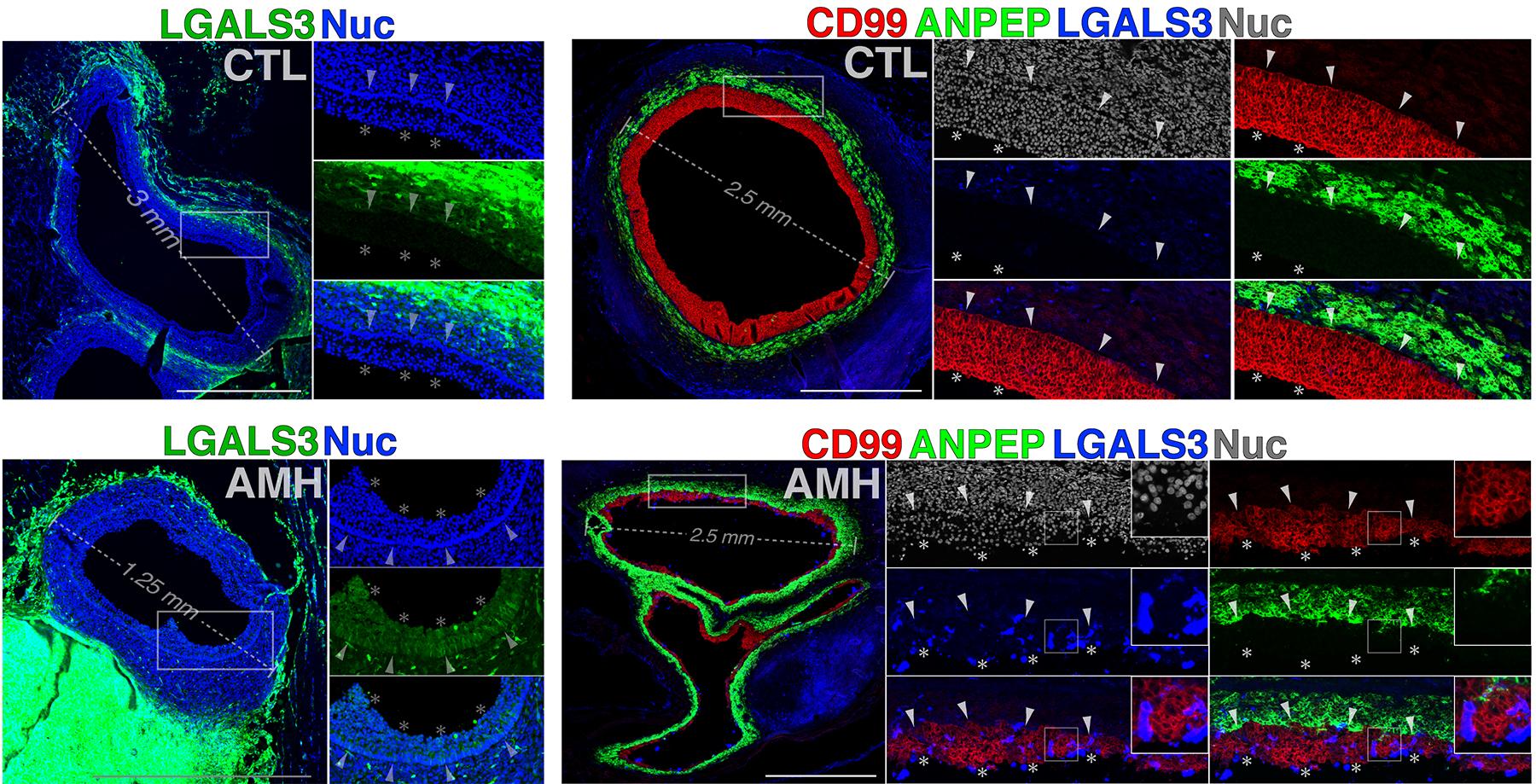
Anti-Mullerian hormone (AMH) was discovered in 1947 and initially recognized for its function in promoting male sexual development, but AMH is expressed in women by granulosa cells (GCs) that foster oocyte development within ovarian follicles. Because it is expressed exclusively by growing follicles, serum AMH provides a reliable measure of ovarian follicular reserve, but its function in the context of normal folliculogenesis remains controversial. Because of the increased volume of growing follicles present in patients with polycystic ovary syndrome (PCOS), elevated AMH is a diagnostic hallmark of the condition, but a potential negative impact of elevated AMH on the growing follicle pool is not clinically recognized. We have employed our xenograft platform to model the influence of superphysiological AMH on follicle development and demonstrated a profound impact on growth and maturation. The phenotype elicited by growth in the context of superphysiological AMH accounts for clinically observed dysfunction in the ovaries of PCOS patients, and ongoing studies in the lab aim to target downstream effectors of superphysiological AMH to identify therapies the can mitigate ovulatory dysfunction.